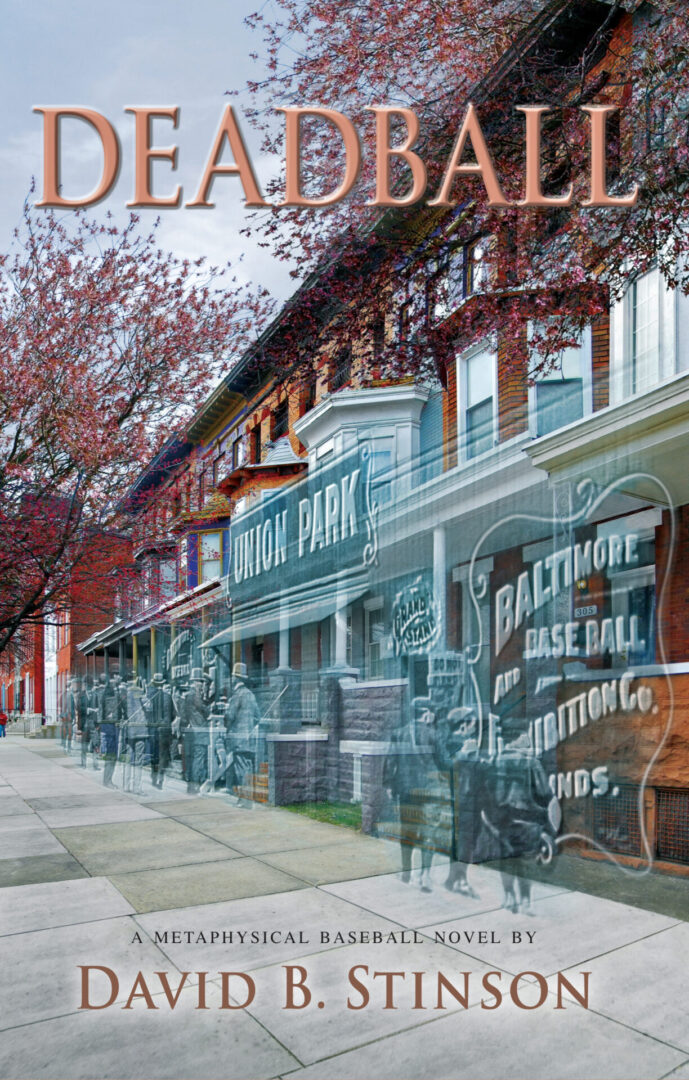Hamtramck Stadium is located at 3201 Dan Street in Hamtramck, Michigan, one block east of Joseph Campau Avenue.

The ballpark was constructed by John Roseink in 1930 on land owned by the Detroit Lumber Company. Roesink was owner of the Detroit Stars, a member of the National Negro League. Hamtramck Stadium also was known as Roesink Stadium.

Located in the Veterans Park, the city of Hamtramck, Michigan, took over ownership of the ballpark in the early 1940s.
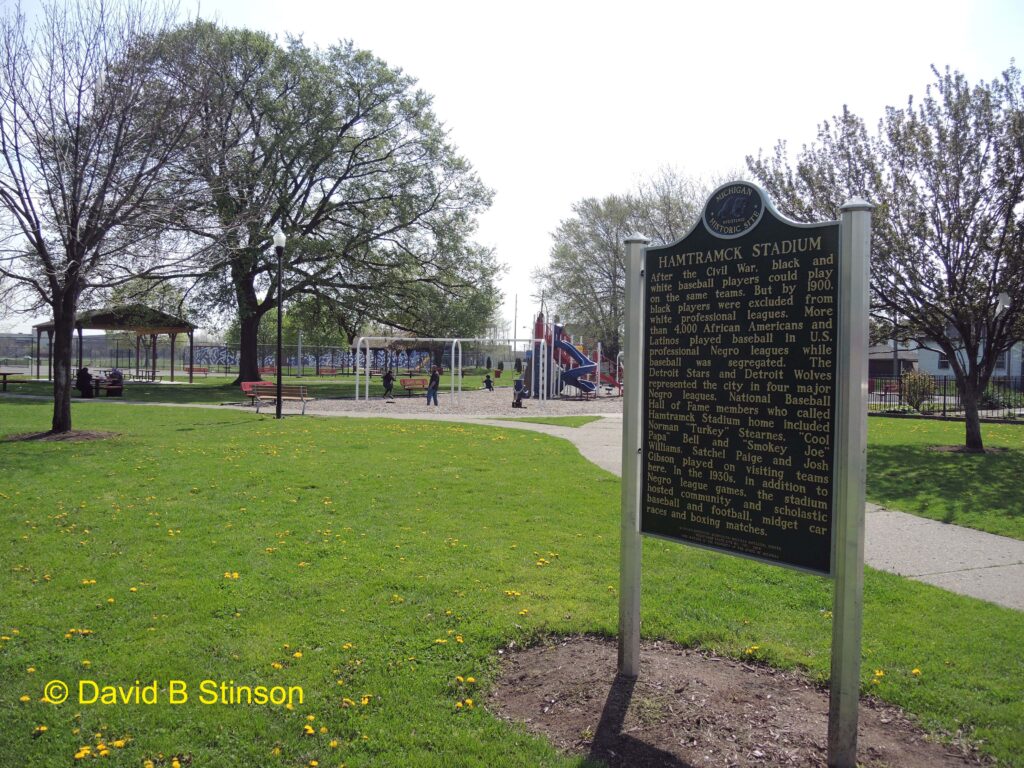
The State of Michigan placed a historic marker near one entrance to Veterans Park, at the northeast corner of Joseph Campau Avenue and Berres Street.
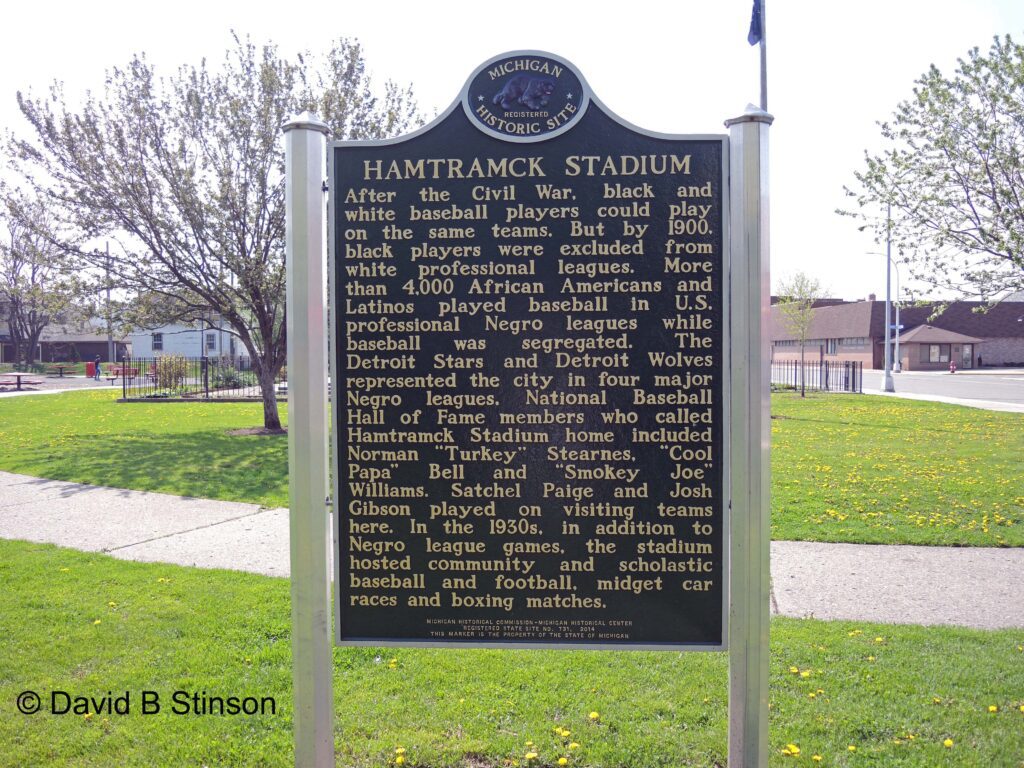
Hamtramck Stadium is on the National Trust for Historic Places. If you approach the ballpark from Dan Street, the historic marker is located two blocks west on Joseph Campau Avenue.

It is remarkable that Hamtramck Stadium still exists, given the fate of so many lost ballparks around the country. The distinctive grandstand of Hamtramck Stadium appears almost to hover over the playing field.

Hamtramck Stadium, at least the portion nearest the grandstand, has not been used for baseball since the 1990s. The grandstand currently is not open to the public.
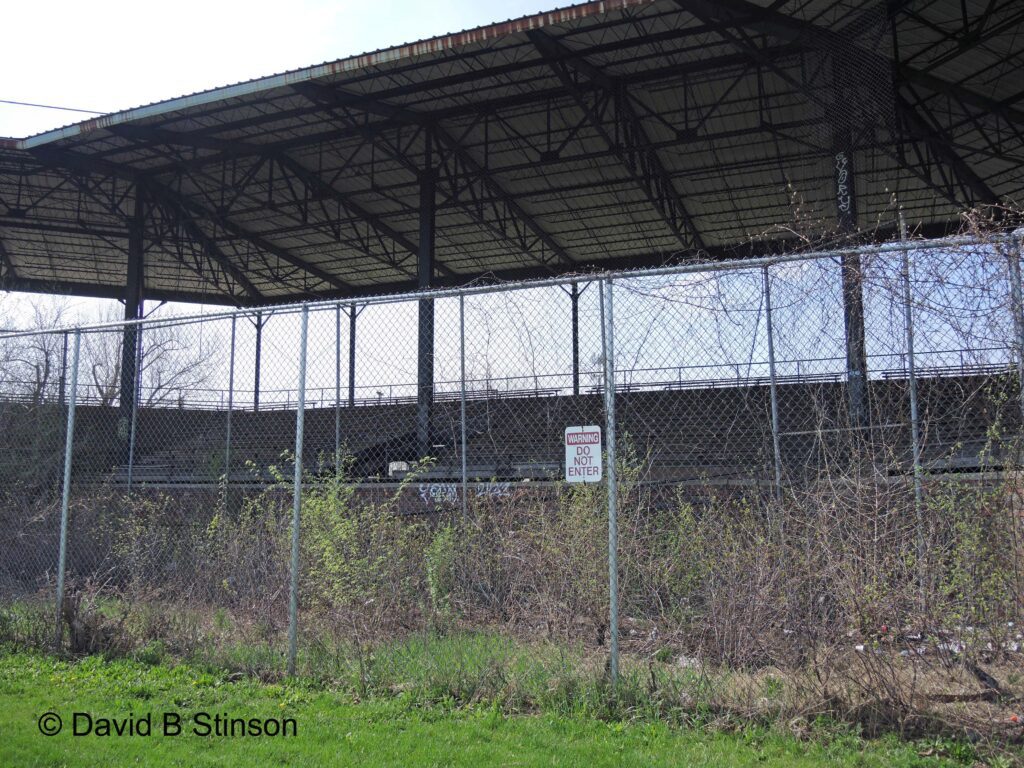
The history of Hamtramck Stadium is rich and much of the factual history recounted here is from the websites Detroit: the History and Future of the Motor City and Hamtramck Stadium: Historic Negro League Ballpark
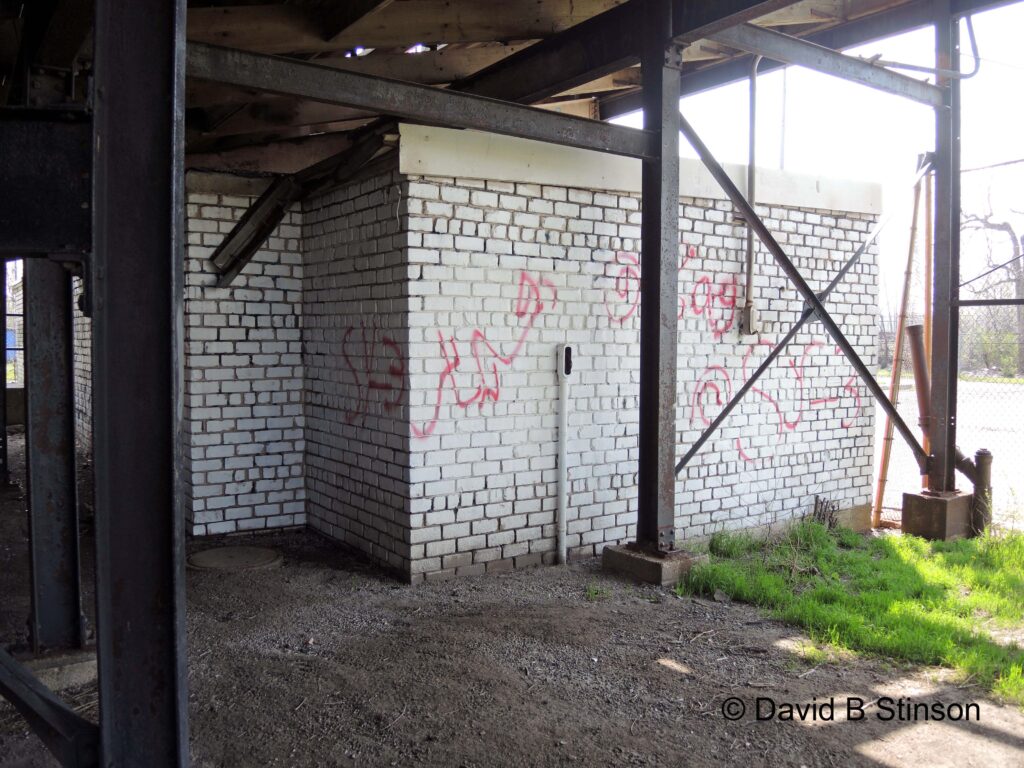
When Hamtramck Stadium opened in 1930, it featured a 12-foot high outfield fence, box seating, and right field bleachers.
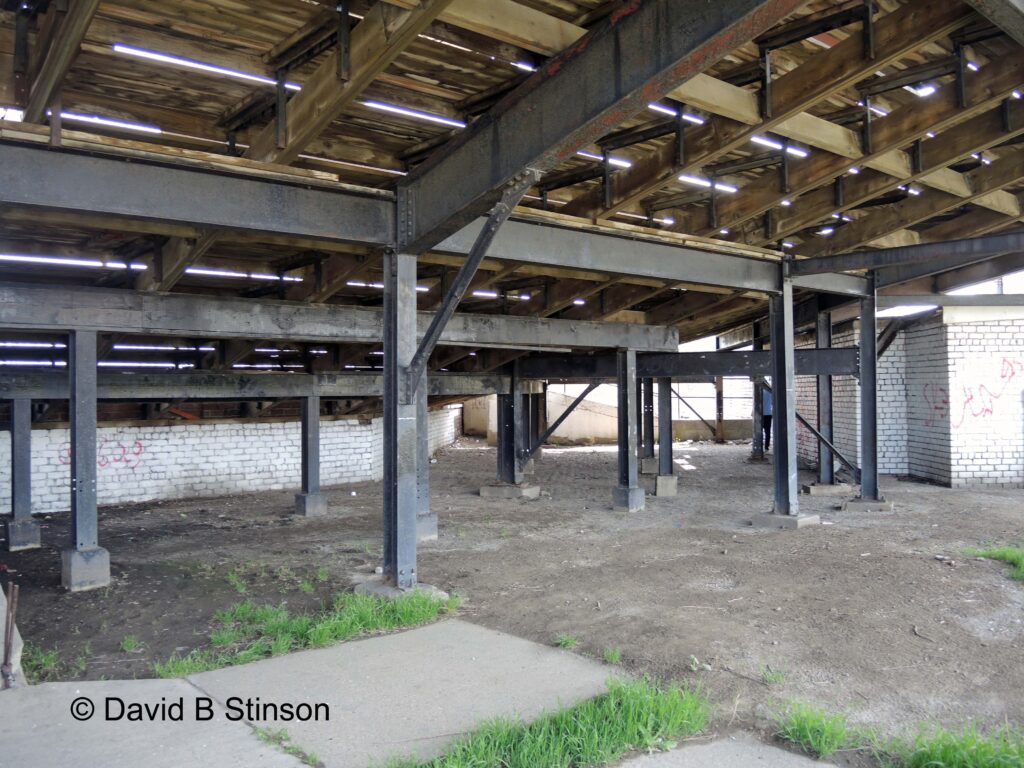
The grandstand that remains is constructed of steel beams and girders supporting a mostly wooden floor and ceiling structure.

The first game played was on May 10, 1930, when the Detroit Stars hosted the Cuban Stars. The Cuban Stars won that 13-inning contest 6-4.

The ballpark’s grand opening was held a day later, on Sunday May 11, 1930, and the Detroit Stars defeated the Cuban Stars 7 to 4. Former Detroit Tiger Ty Cobb threw out the first pitch, with over 9,000 fans in attendance that day.
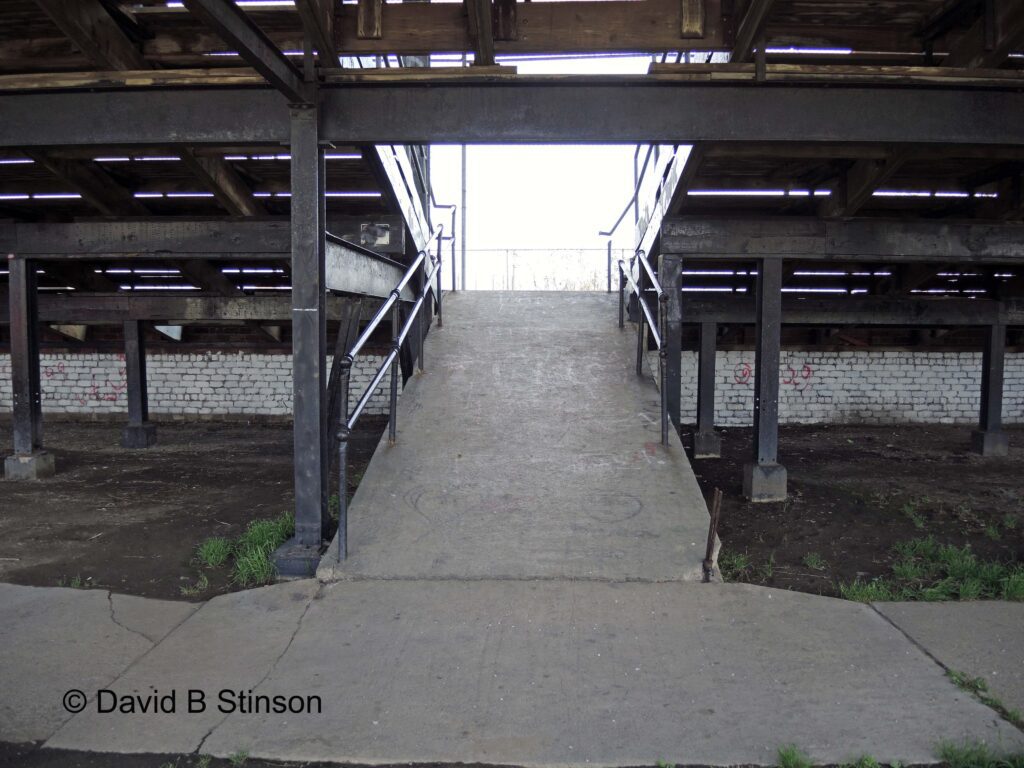
The Detroit Stars played only two seasons at Hamtramck Stadium, as the team’s league, the Negro National League, folded half way through the 1931 season.

However, those two years were remarkable. Friends of Historic Hamtramck Stadium has determined that 18 members of baseball’s Hall of Fame played at the ballpark.
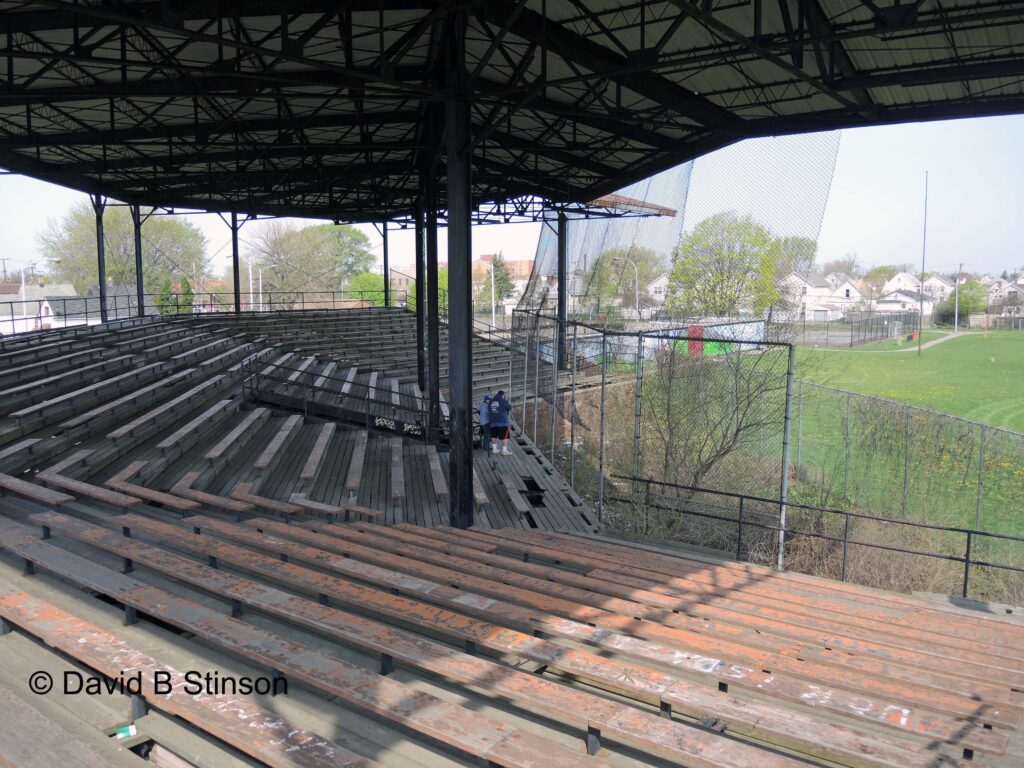
They include Negro League players Turkey Stearnes, Josh Gibson, Satchel Paige, Cool Papa Bell, Willie Wells, and Mules Suttles.
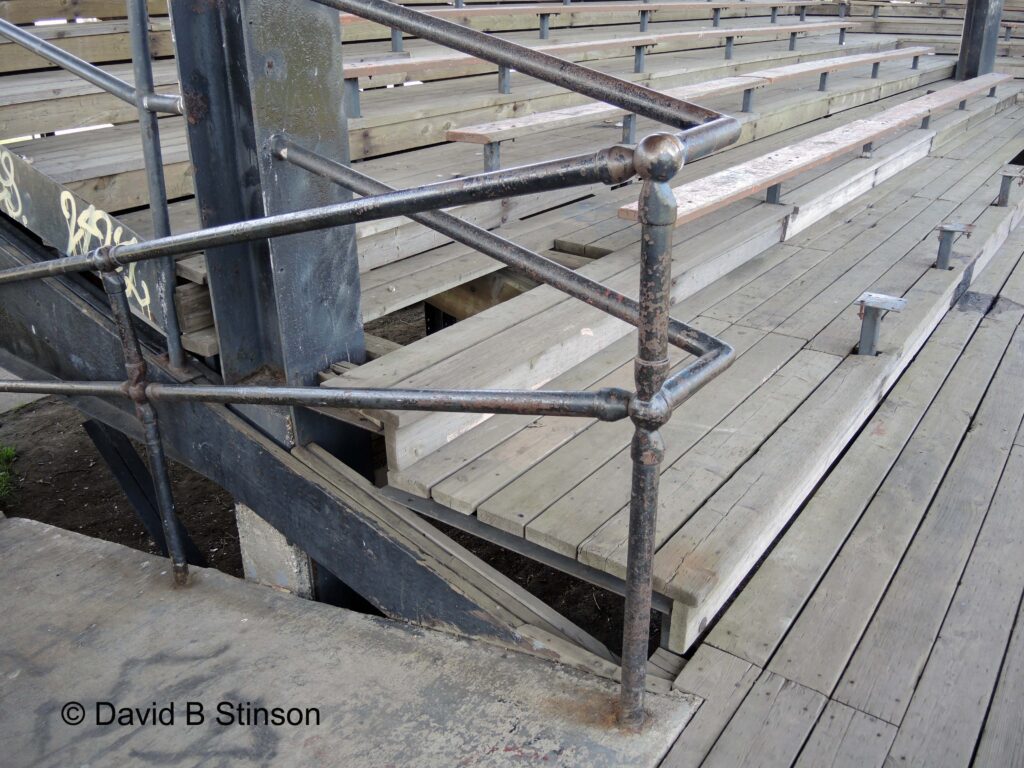
Portions of the grandstand were renovated by the city in the 1950s and again in the 1970s.
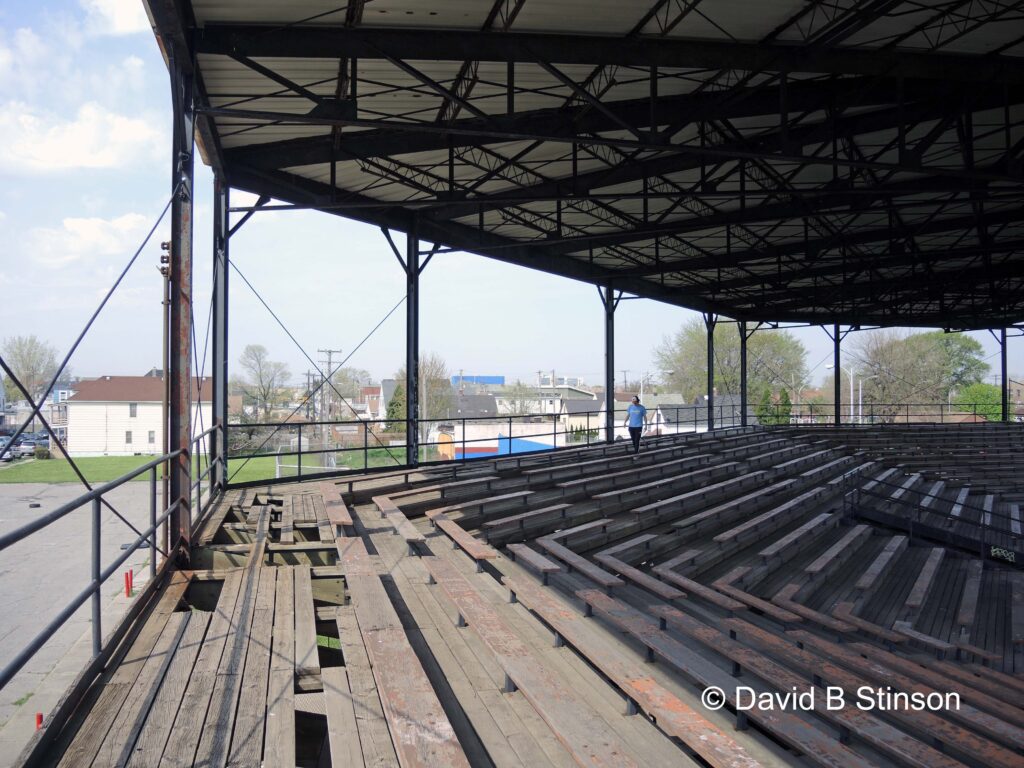
On June 28, 1930, the first night baseball game in the state of Michigan was played in Hamtramck Stadium using a portable lighting system. The Detroit Stars faced the Kansas City Monarchs with a crowd of over 10,000 people in attendance.
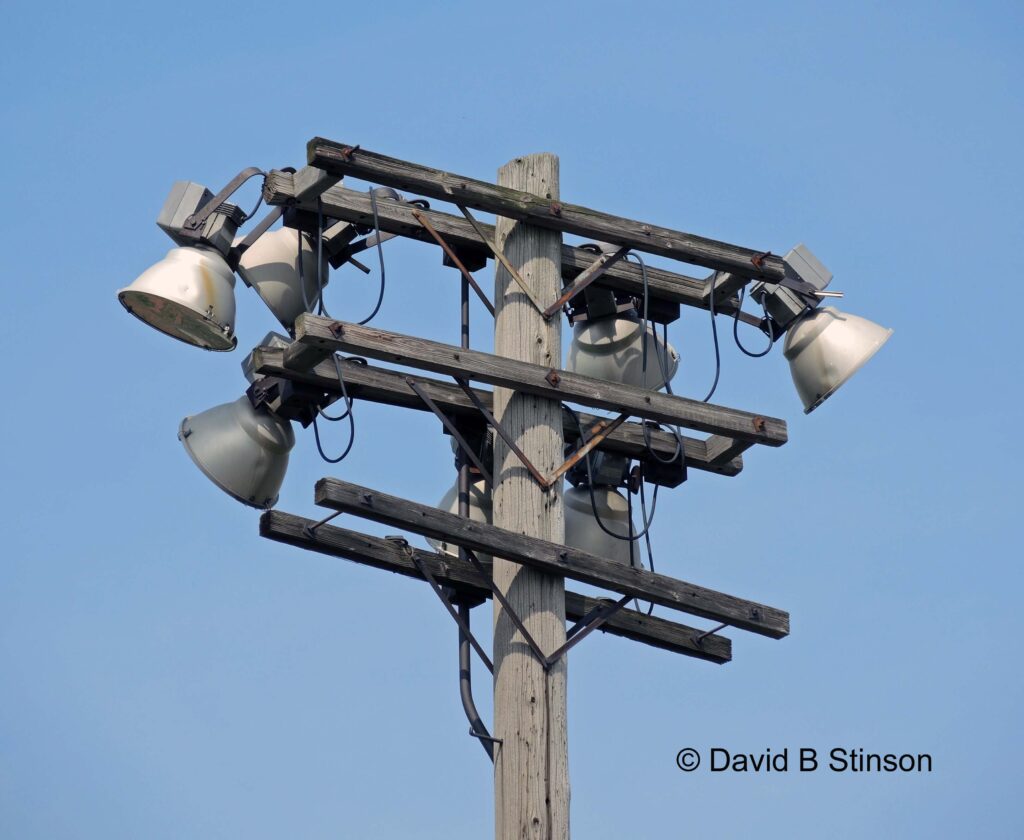
Hamtramck Stadium is one of the last surviving Negro League baseball parks. Others include Rickwood Field in Birmingham, Alabama and Hinchliffe Stadium in Patterson, New Jersey.

A third stadium, West Field in Munhall, Pennsylvania, recently was demolished in 2015, although the field remains and the site still hosts local and high school baseball and football.
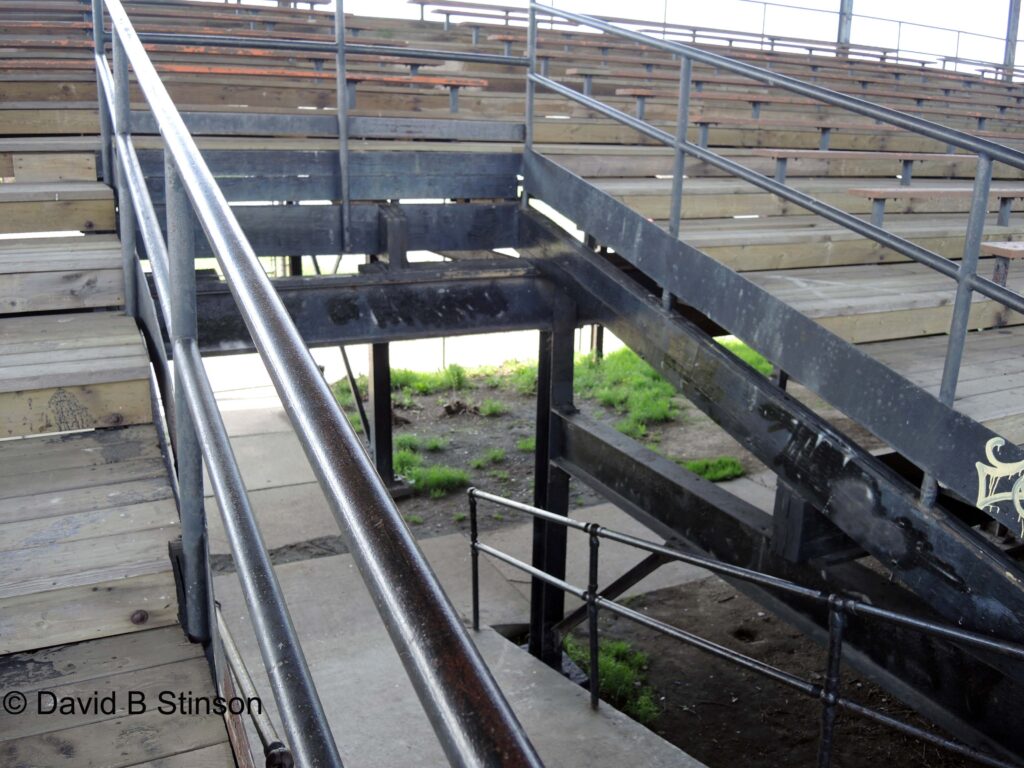
Rickwood Field is still utilized as a baseball park by the city of Birmingham and hosts a minor league game once every year, known as the Rickwood Classic. Effort is underway to preserve and restore Hinchcliffe Stadium, which, like Hamtramck Stadium, is listed on the National Trust for Historic Places.
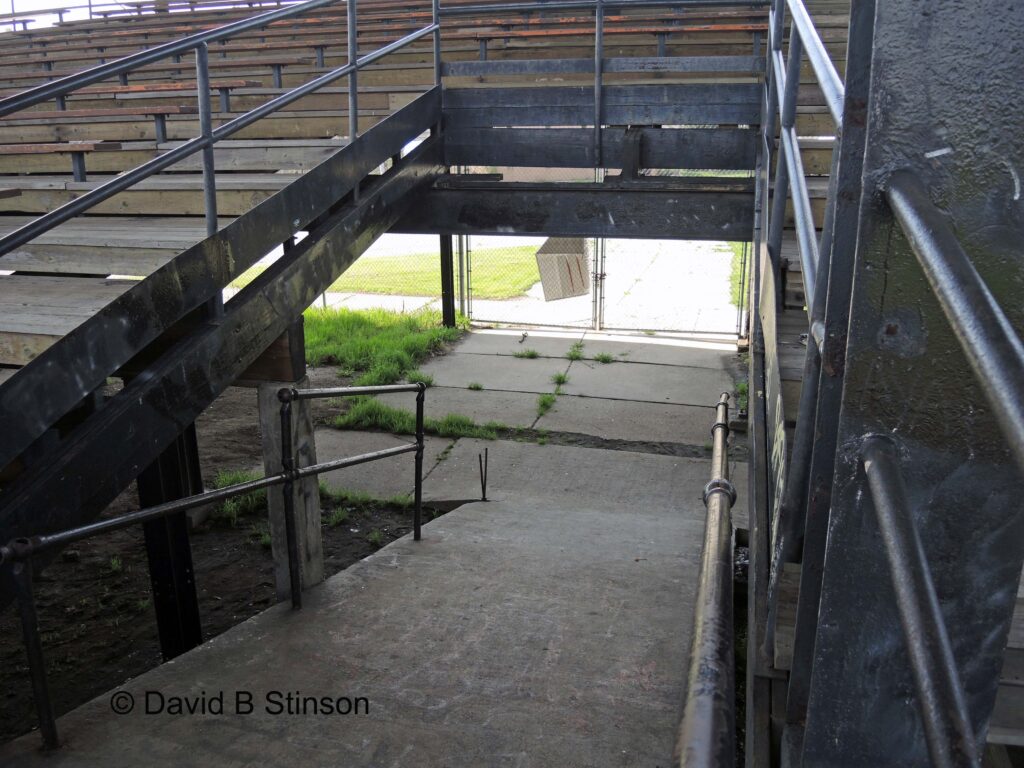
Concession stands and additional storage buildings located along the third base side of the stadium were constructed by the city of Hamtramck in the 1950s.
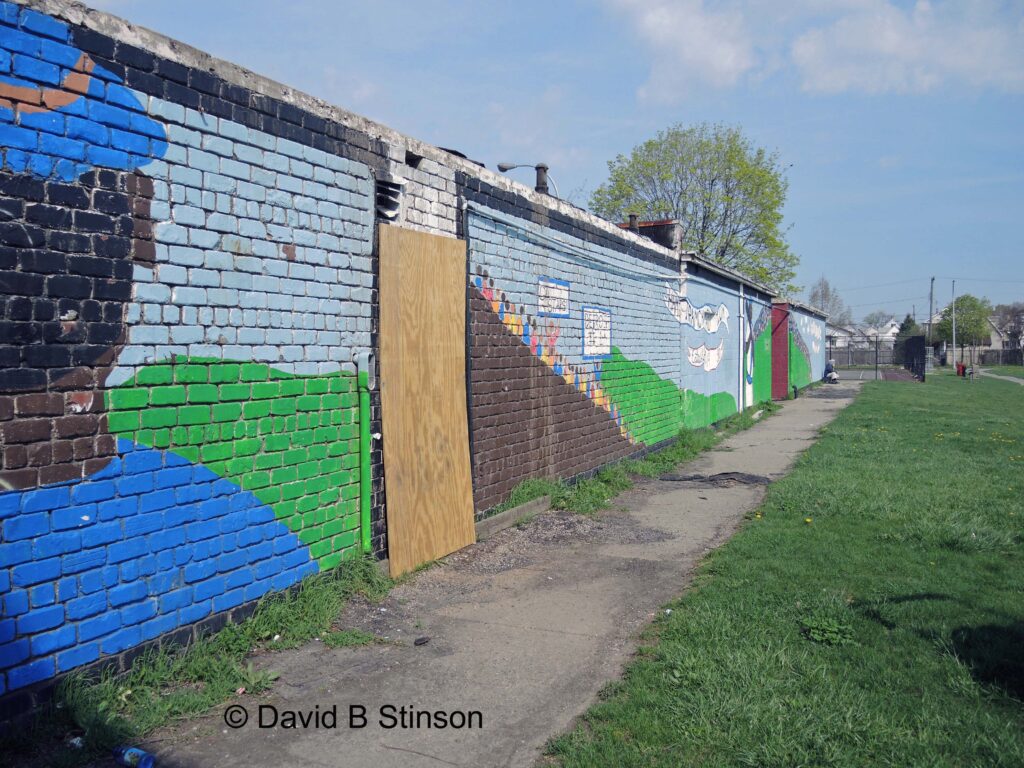
Those buildings now include murals that help tell the story of the ballpark.
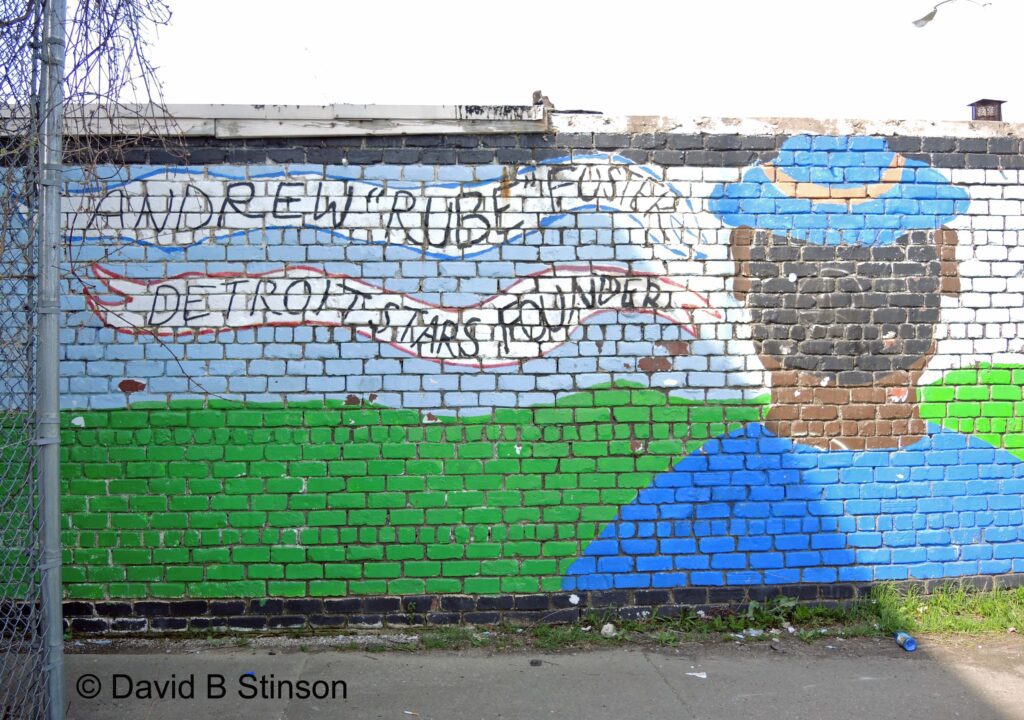
Fun Fact: Right Field is located adjacent to the Grand Trunk Western Railroad Line. Those old enough to remember “We’re An American Band” will recognize the railroad from which the band Grand Funk Railroad got its name.

The following video of Hamtramck Stadium includes a walk through the grandstand and a drive around the stadium.
Hamtramck Stadium was home to the city’s 1959 Little League World Series champions, featuring local legend Art “Pinky” Deras, considered one of the greatest Little League World Series players.
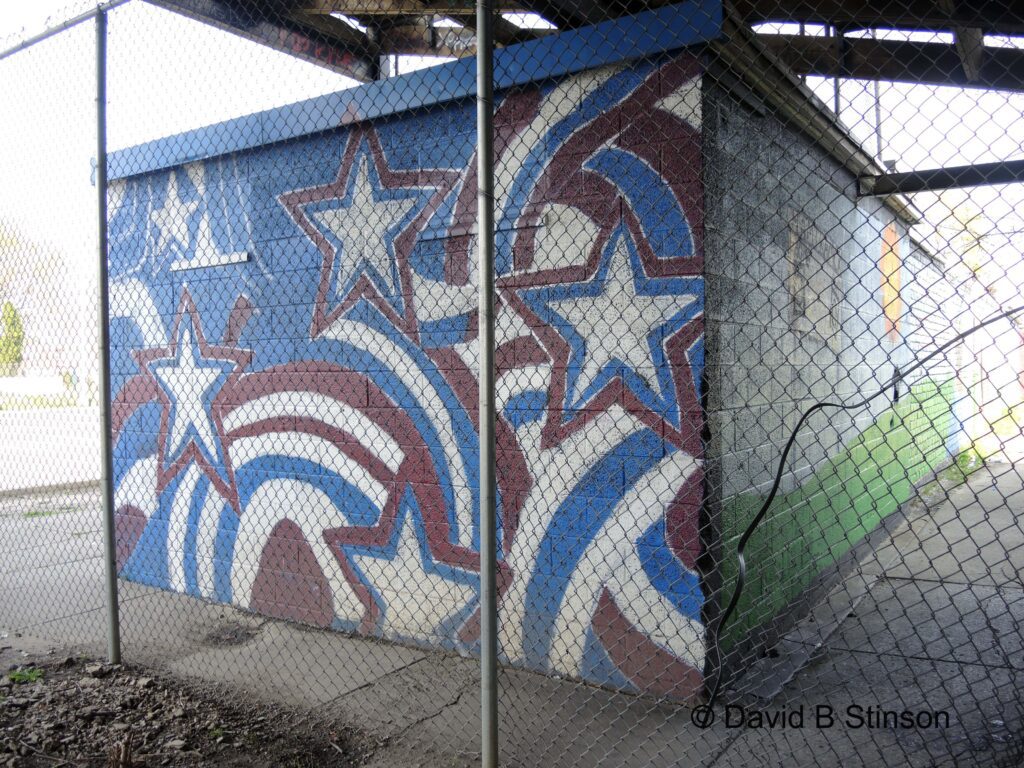
Three years ago, members of the former Navin Field Grounds Crew banded together to form the Hamtramck Stadium Grounds Crew. Their interest in the historic ballpark helped bring renewed attention to the history of Hamtramck Stadium, and helped begin the process of restoring this once-proud ballpark.

Historic Hamtramck Stadium, Hamtramck, Michigan
In the northern-most point of Hamtramck Stadium’s center field is a second baseball diamond used and maintained by Hamtrack Public Schools.

Like Hamtramck stadium, this smaller ballpark has a certain old-school charm, with its tall, fenced backstop and rustic light stanchions.
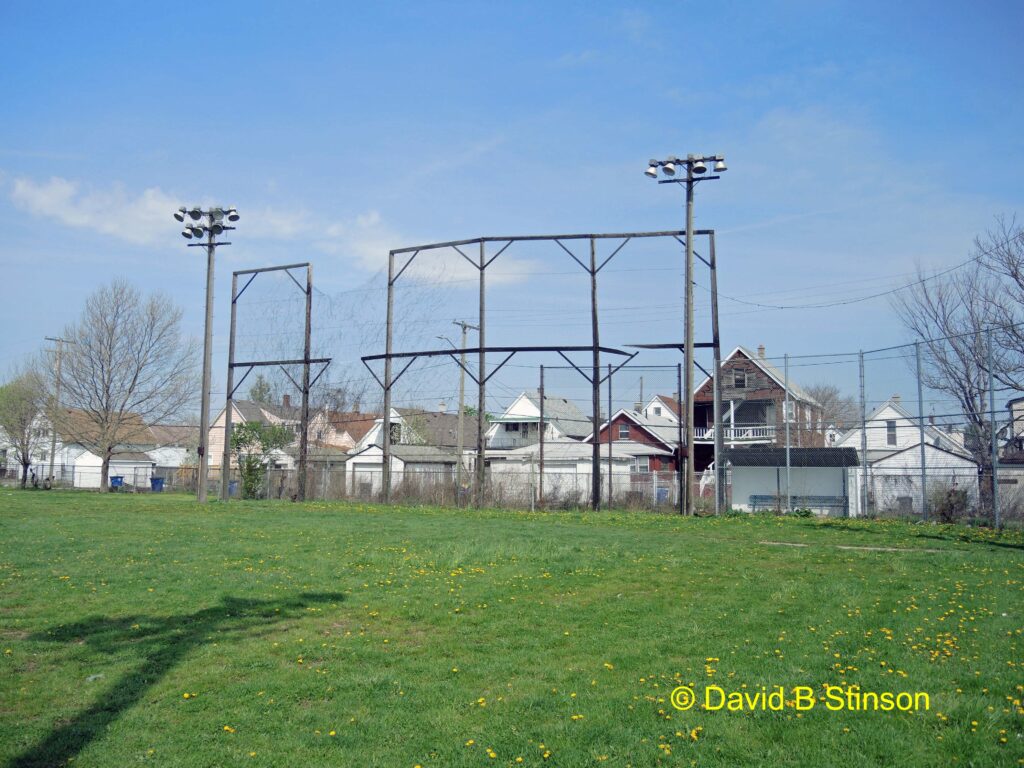
Also worth visiting is Keyworth Stadium, located in the same complex, Veterans Park, just north of Hamtramck Stadium.
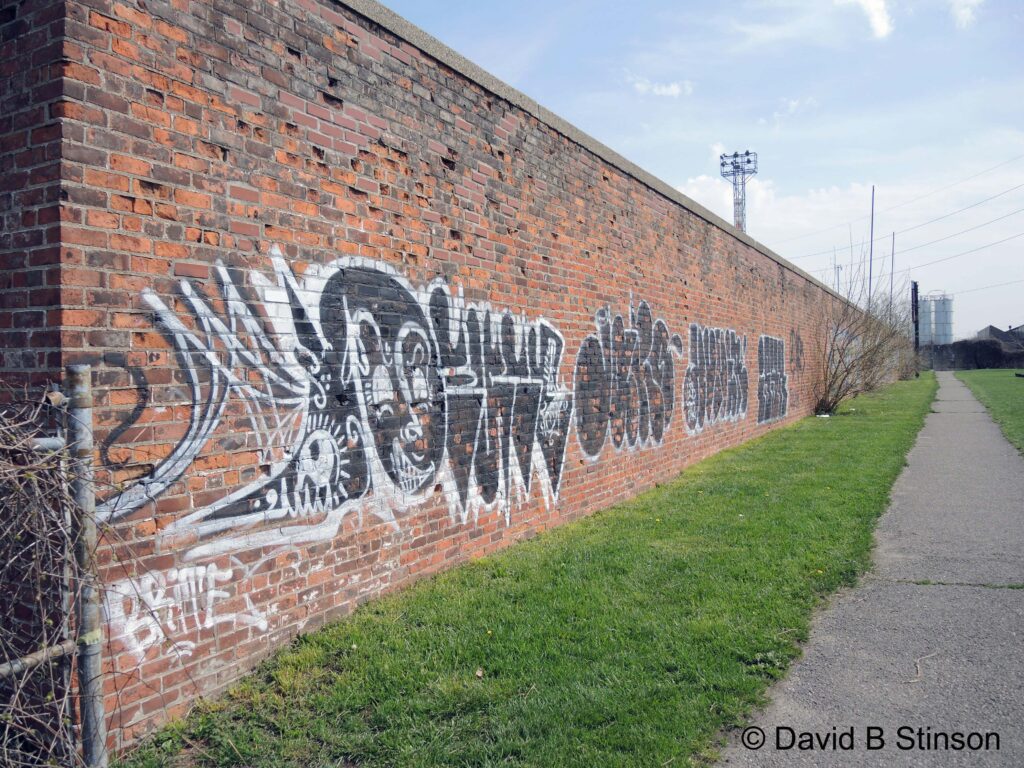
Hamtramck Public Schools owns Keyworth Stadium, and hosts athletic events such as local soccer and football, as well as other community events.
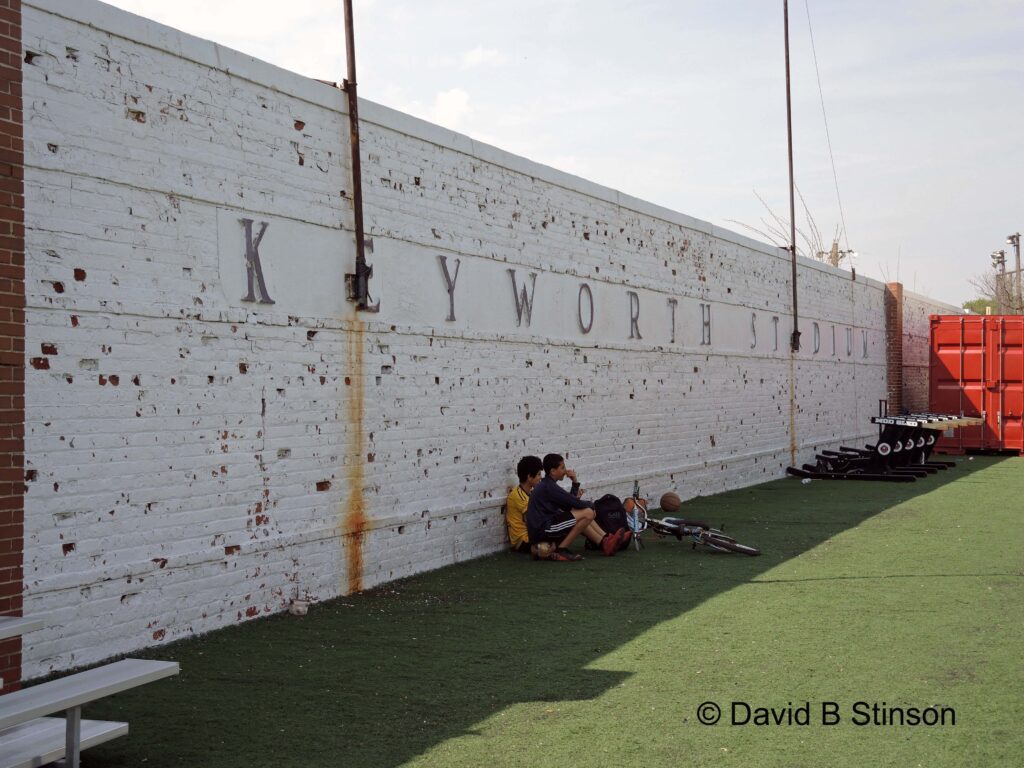
The stadium was constructed in 1936 as Michigan’s first Works Progress Administration project.

The first event held at the stadium was a rally featuring President Franklin Delano Roosevelt during his second campaign for President in October 1936.

Keyworth Stadium’s grandstands are a bit rough around the edges, and certain sections are cordoned off by chain link fence. However, the fact that the stadium remains a living part of the city of Hamtramck is a testimony to city and its appreciation of such historic places.
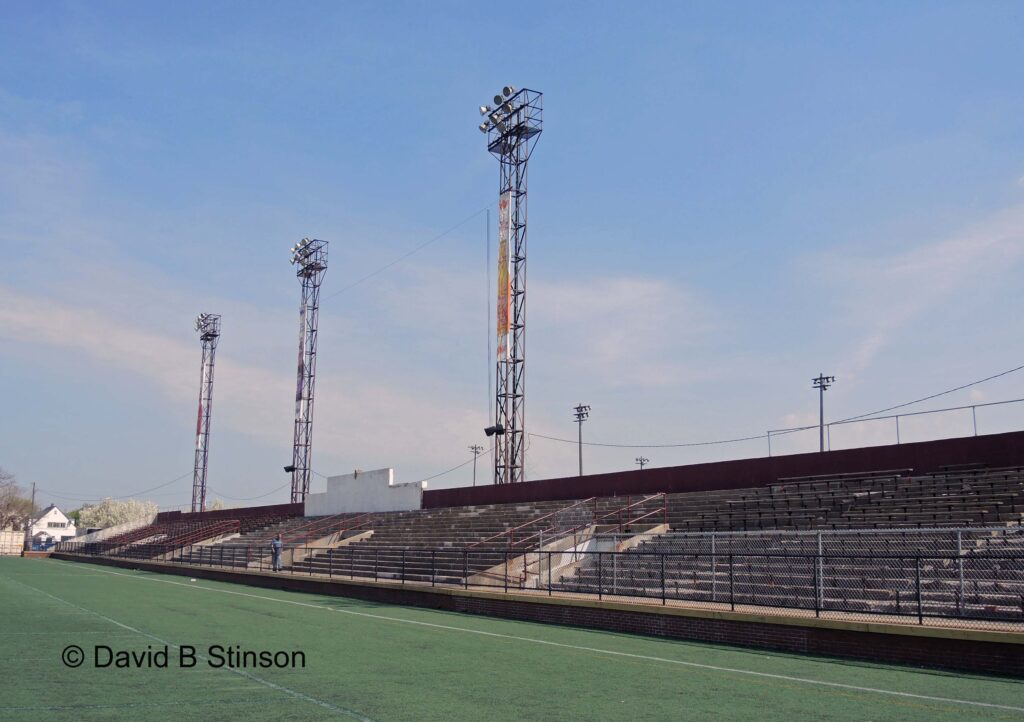
hamtramckstadium.org, with the help of assistance of the Piast Institute, Friends of Historic Hamtramck Stadium, and Detroit’s own Jack White, have launched campaign to help restore Hamtramck Stadium. The campaign began in early 2019 and has set a goal of raising $50,000. Anyone interested in contributing can contact patronicity.com for more information, and to make a donation. Opportunities such as this to help reclaim a historic, almost lost ballpark, are rare, and truly are worth the effort.
